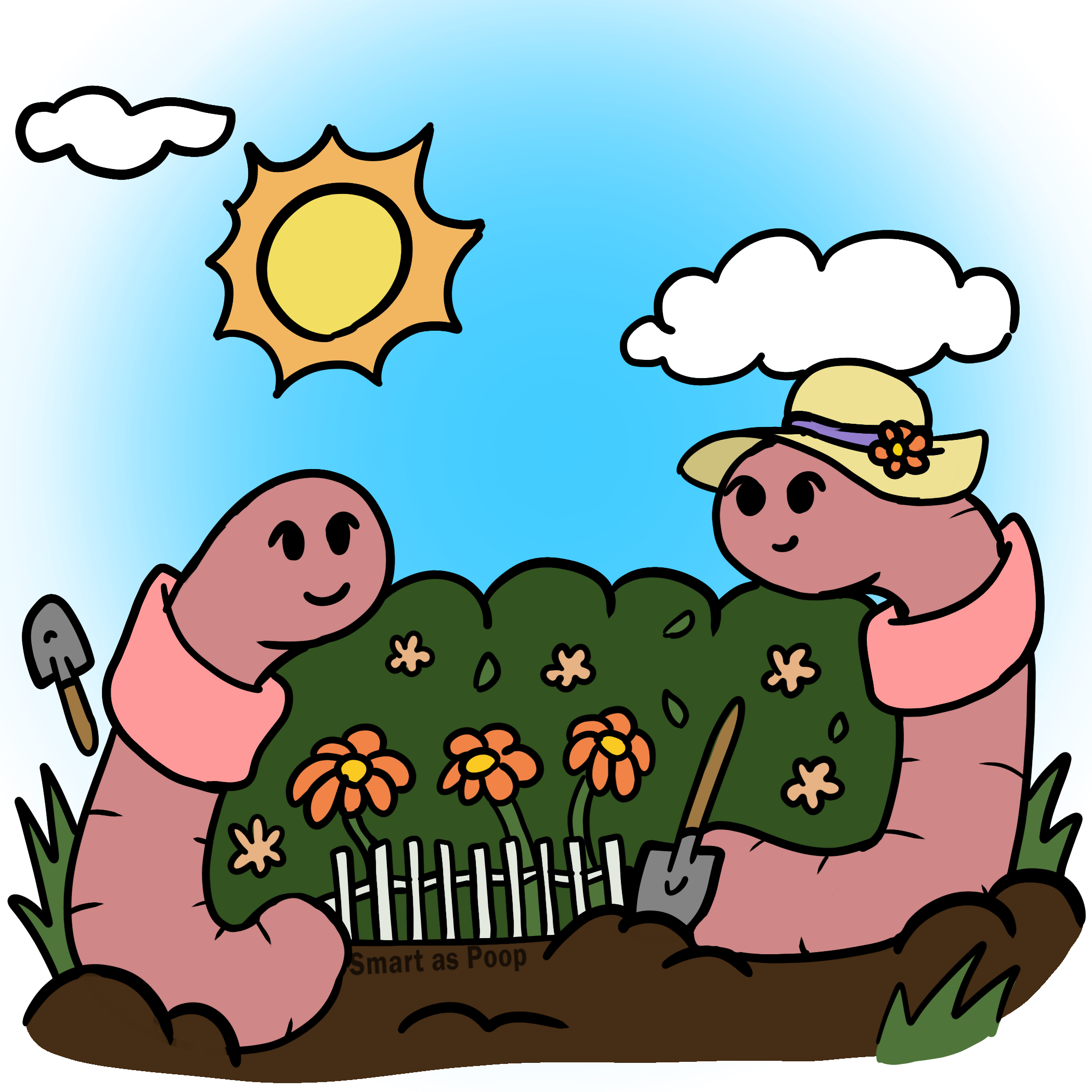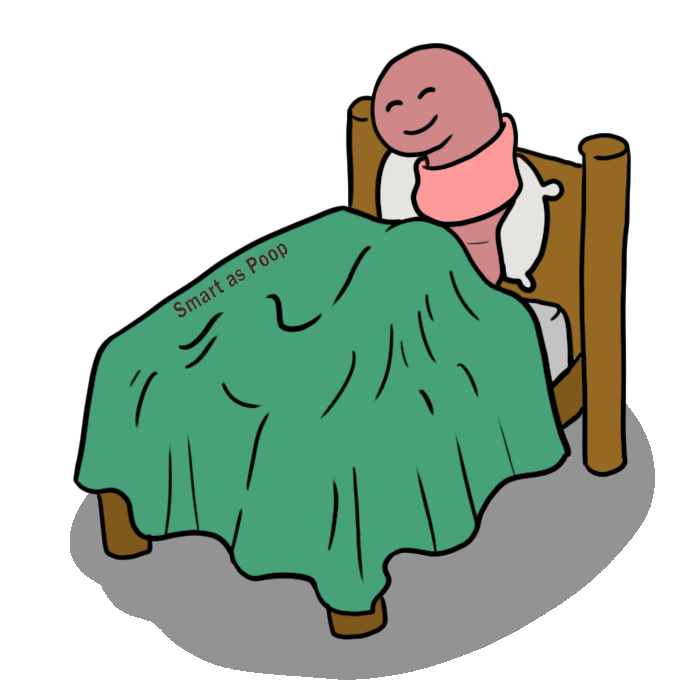FREQUENTLY ASKED QUESTIONS
Smart as Poop is proudly located in the west end of Ottawa (Stittsville), Ontario, Canada.
2403 Conley Road
Stittsville, Ontario
K2S1B8
PICK UP by appointment only.
Absolutely! We welcome PICK UP orders from our Stittsville (Ottawa) location.
Pick Up by appointment ONLY. No drop ins. Please & Thank you!
Simply select the PICK UP option at check out. The Smart as Poop team will be in touch to arrange a mutually agreed upon time for you to pick up your order.

Vermicomposting is the process of composting decomposing food waste with the use of worms, in this case red wigglers (Eisenia fetida). With the help of red wigglers, food waste can easily be composted indoors, year round. Vermicomposting is easy, odorless and requires minimal maintenance.

Very little! It really is as simple as feeding your worms a couple of times per week.

Only if you want to! Feeding and maintaining your worm bin can be achieved without even getting your hands dirty. It is as easy as digging a whole and burying your food waste.

Not to worry, your worms will be just fine without you. Simply ensure that the composter lid closed before leaving for the weekend or holidays.
Vermicomposting can be a very satisfying, rewarding and inexpensive pursuit.
Materials & Equipment:
- Composting worms
- Vermicomposter
- Bedding material
- Water
- Source of calcium
- Source of “gritt"
In nature, it is estimated that there are over 2000 different varieties of earthworms worldwide. There are few varieties of earthworm however that are as well suited for composting as Eisenia fetida, more commonly know as Red Wigglers.
Why Red Wigglers?
Red Wigglers eat copious amounts of organic material, adapt well to life in a bin, they reproduce quickly and tolerate of a wide range of temperatures, acidity and moisture levels. In addition to this, red wigglers don’t mind being disturbed. The latter being an important consideration, especially if your house is anything like mine … my kids “visited” the worms quite frequently, particularly while they were still a novelty. Also, don’t be surprised if your worms are the ones taking centre stage at your next social gathering.
Most reputable sources suggest you first consider how much organic food waste your household produces per week, and, based on this information advises you on how many pounds of red wigglers to purchase in order to begin vermicomposting.
My opinion…
Start with no less that one pound of red wigglers per bin. I think it is safe to say that most households today produce 3.5 pounds of organic waste per week!
Why?
First, when I start a project, I like to hit the ground running. I can have a short attention span, so, I find that starting with a minimum of one pound of red wigglers ensures that I see results sooner rather than later.
Secondly, beginning the process with any less than one pound of red wigglers means that I am going to have to spend more time managing my worms and fussing over how much to feed them, while being careful not to overfeed. Frankly, this requires more thought and attention than I am willing to dedicate to the project. I want a vermicomposter that is productive, and I do not want to have to spend a lot of energy nurturing my worm population to achieve this.
The General Rule of Thumb … you need a WORM : KITCHEN WASTE ratio of 2 : 1
| Pound(s) of Red Wigglers needed | Pounds of food waste generated per week |
|---|---|
| 0.5 | < 2 |
| 14 | 3.5 |
| 2 | 7 |
| 3 | 10.5 |
| 4 | 14 |
If, for budget reasons etc, you decide to begin vermicomposting indoors with less than one pound of red wigglers, be very careful not to overfeed.
Remember …overfeeding your worms can lead to more potential problems than underfeeding. You are better to have more worms than more garbage!

One of the advantages of using red wigglers in your vermicomposter is that they have voracious appetites. Red Wigglers eat their body weight per day, 50% of which is partially decomposed food scraps while the other 50% is carbon (eg shredded paper). So, assuming you have populated your bin with one pound of red wigglers, your bin’s tenants will consume one half pound of partially decomposed food scraps per day! The good news is that this is just the beginning … as your red wiggler worm population grows, so too will their demand for food. As such, in time, your vermicomposter will be able to process proportionally more food scraps per day.
Personally, I feed my red wigglers roughly half of their weekly ration twice per week. I find that this works well for me, and, the worms don’t seem to mind either.
How often you feed your worms is up to you. The important thing is to try to be reasonably consistent – a feast or famine approach does not end well!

Your red wigglers can eat virtually anything you do!
For indoor worm bins, for various reasons however, I suggest the following guidelines:
| Food Scrap DO’s | Food Scrap DON’Ts |
|---|---|
| FRUITS * | MEAT |
| VEGETABLES | DAIRY PRODUCTS |
| RICE | EXCESSIVELY OILY FOODS |
| PASTA | |
| BREAD | |
| MUFFINS | |
| CAKES | |
| CRACKERS | |
| EGG SHELLS |
*add citrus fruits/peelings in moderation
Over the years I have tried a number of vermicomposters (including DIY versions). Hands down, I recommend purchasing a well designed vermicomposter over any DIY version. When my business had grown to the point that I felt we were ready to start stocking and selling vermicomposters, I chose to stock the vermicomposter, which after a series of trials with other commercially available models, I found to be the best for our household needs … the Worm Factory 360.
Why choose the Worm Factory 360?
- A leader in the industry.
- A tried, tested and trusted vermicomposter.
- Excellent ventilation.
- Excellent drainage.
- Excellent flow through design.
- Value pricing.
- Compact footprint.
- Designed with long life and productivity in mind. (Some of my units have been working extremely hard for over 10 years!)
While other online retailers choose to sell any and all varieties of vermicomposter in order to boost sales. Smart as Poop chooses to carry only one vermicomposter, The Worm Factory 360, the one that we can recommend with confidence and from experience.

Bedding Material is both:
1) the physical environment within which the worms live (inside your vermicomposter)
AND
2) a very important source of food for the worms.
Yup, that’s right! Once established, your red wigglers will consume the environment in which they live! For this reason, it is important to provide bedding material that will satisfy their nutritional needs as well as act as a fly deterrent. Smart as Poop recommends a combination of coconut coir and shredded newsprint.

If your red wiggler worms are “happy” they will have no need or desire to leave their home (vermicomposter). After all, why would they if you are providing all of which they require to survive and thrive?
For your worms to be “happy”, they will need the following:
- food (kitchen scraps)
- a carbon source (shredded paper or alternative)
- moisture (water)
- a source of “grit”
- oxygen (a well designed and ventilated vermicomposter will satisfy this requirement)
- a relatively constant temperature
- a relatively neutral pH
There is an endless supply of information regarding vermicomposting online today. A simple Google search will provide more information than anyone could possibly digest. The question is … What is the quality of the information provided? What I have noticed, is that, as the popularity of channels such as YouTube grows, so too does the number of “experts” on every possible subject.
My two cents worth …
For those of us who have a thirst for a little more knowledge about vermicomposting, my advice, for what it’s worth, is to pick up a copy of Mary Appelhof’s Worms Eat My Garbage*. (Yes, that is right. I am suggesting that you read an actual book! ) I find this book to be and easy read that is well organized and contains just the right amount of information to support the average person’s vermicomposting needs.
I bought a copy of this book many years ago and it continues to be a trusted source of information.
They say that you can tell a lot about a person by the books that you find on their nightstand. Which, is exactly where you can still find the dog-eared copy of mine. I know, too much information …
Check with your local library, bookstore or your favourite online retailer for a new or used copy (available in hard copy or eBook).
*This recommendation is not sponsored.
Leave us a review!
Reviews from awesome customers like you help others to feel confident about choosing Smart as Poop! We love to see our community grow and set our world on a path to a smaller carbon footprint.
Click Here
